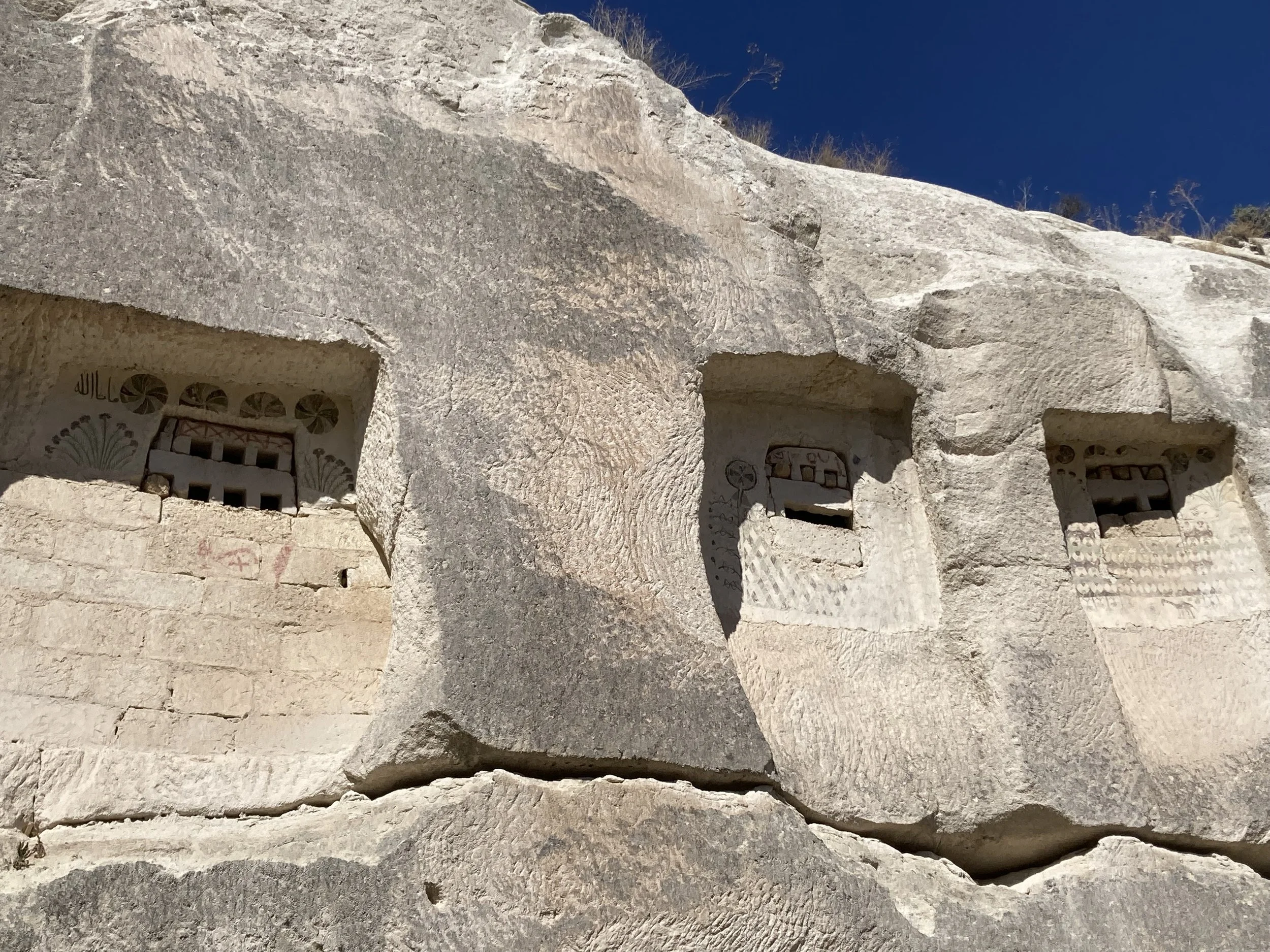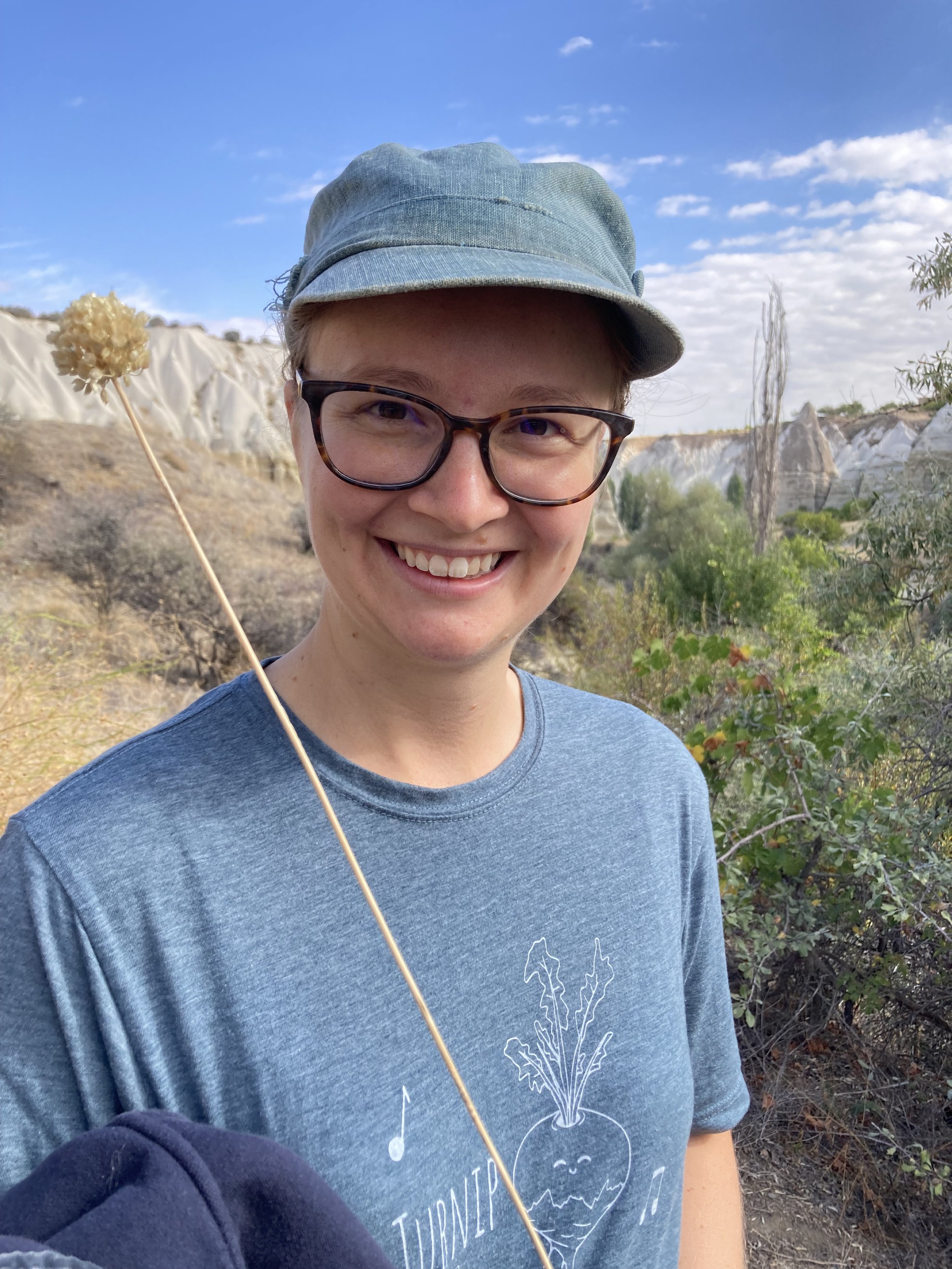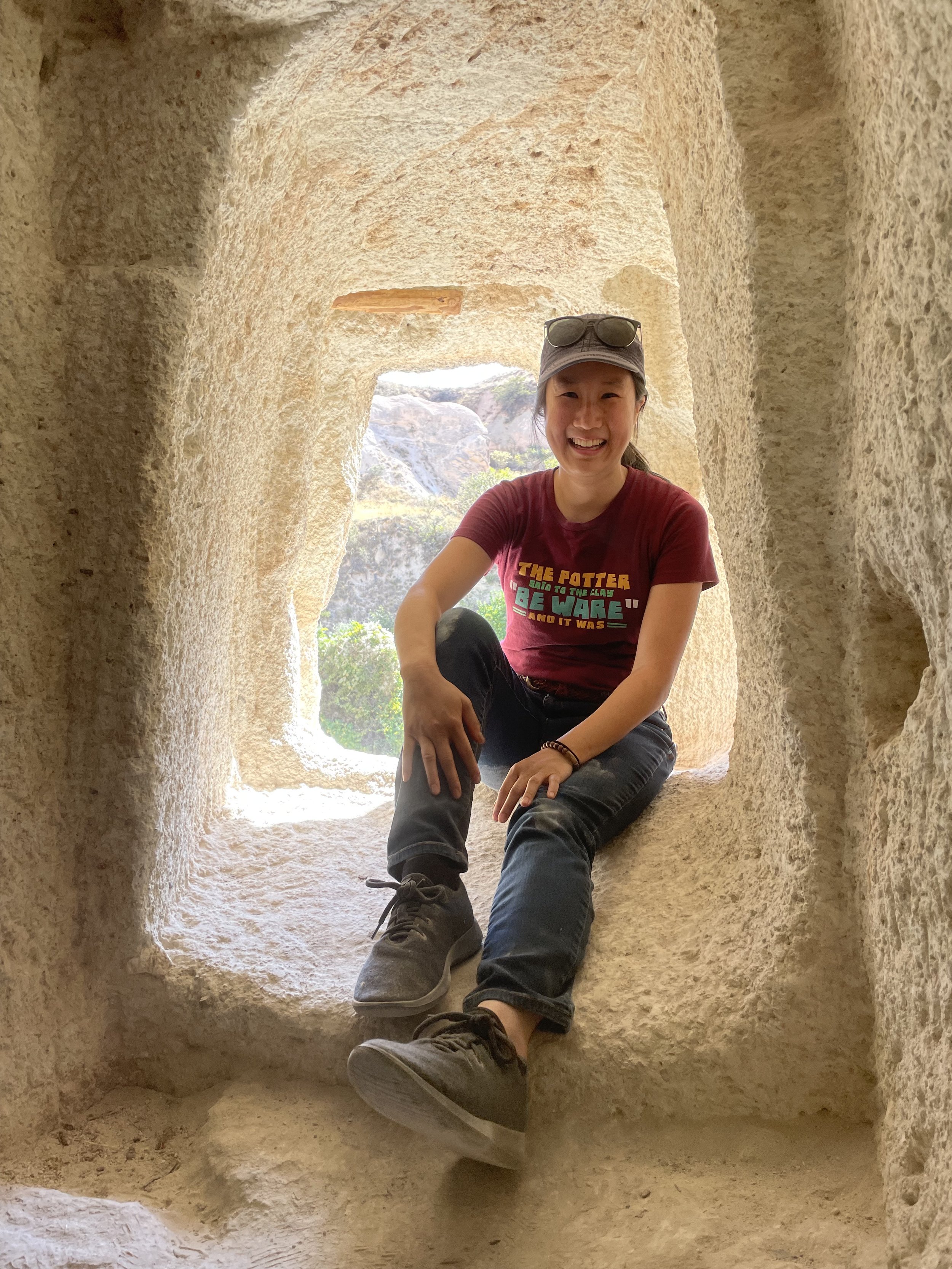Attention at Three Miles an Hour
6 October 2022
Looking across the Rose Valley, with the Red Valley rising behind
Yesterday we hiked the valleys and hills of Cappadocia. “Hills” isn’t quite the right word for rock mounded and spired and folded like cloth, but a flatlander’s vocabulary lacks precision. Our guide Halil led us across cliff faces and into ancient churches, stopping to quiz us on plants or have us pick fruit on the way. The cliffs above the valleys were inhabited for centuries, houses carved into soft volcanic rock, and fruit trees still populate the valley floor. We ate plums, apples and grapes.
The volcanic rock that makes such fantastic landscapes is not fertile. Halil pointed out dovecotes carved high in the cliffs. People made nests for pigeons to come and raise their young. They fed the birds and offered them protection. In return, pigeon dung enriched their fields. I love the reciprocal benefits of that arrangement—and the idea of flocks that fly in such a vertiginous world. We saw ancient beehives, too.
Dovecotes decorated with 18th century Ottoman designs. Pigeons appreciate the protection from hawks
A beehive in the cliffs!
I was adding gleefully to my plant catalogue, of course: the olive lookalike called silverberry, which flowers yellow in May to perfume the valleys. Wild roses now set with rosehips. The autumn-withered leaves of what look like tulips—tulips were first cultivated in Turkey, not Holland, and the wild tulip is native to the land around Amasya. Wild garlic gone to seed and feathering asparagus, and wildflowers for which I had no name. We saw a hummingbird hawk moth, too: the insect lookalike of a baby hummingbird. Lizards skittered away across warm rocks. Wind hissed through the spires and rattled the bracken, sometimes raising the white dust in clouds. My delight in such details is boundless: this is how you build a world.
Halil said that Leah was the first person to successfully identify wild garlic on one of his tours. She promptly knighted herself.
It’s hard to beat a cave house with a view
Some of many unknown flowers
Kicking back in an 11th century church
The people who lived in the cliffs also worshiped there. Halil took us to cave churches. The church from the 8th century was built by Iconoclasts, and the fresco around the Cross was strictly one of geometric designs. The 11th century church looked like a pigeon house from outside. The inside was columned and capacious, with dust swirling through shafts of light.
Halil helped us scramble across a cliff and past a wrecked bridge to reach the last church. Its frescoes were tattered, the eyes and much else scraped away by worshipers in search of good luck charms. But the remaining paint was vivid. The church was from the 5th century, made within a hundred years of Macrina’s life. I’ve never touched a thing so close to her in time. The way the cloth pleats above the feet in the crowd of apostles and saints, the shape of the cross—these are the colors of her world.
I grinned the whole way down the mountain.
Leah doesn’t remember much about this church, having rung the doorframe like a bell upon entry. It’s likely 8th or 9th century.
Behold! The 5th century!
“Roads go ever on…”
A post-hike snack. Have you heard about stretchy Turkish ice cream?
PS: We enjoyed hearing so many of you weigh in on the mugs! Herein lies the answer to the riddle: the cup in the middle is finely detailed, but—as some observed—too precise. It is in fact a mass-produced pattern, and up close you can see the cracks in the design transfer. Both the right and the left cups were handmade. The left cup was decorated with slip-trailing, a process in which watery clay is used to draw coloured 3D designs on a surface. The decoration was accomplished in a single step. But the designs on the right cup had to be drawn, and then painted. “You pay for an artist’s time,” the potter told us—and the right cup, being most time-consuming, is most valuable.












